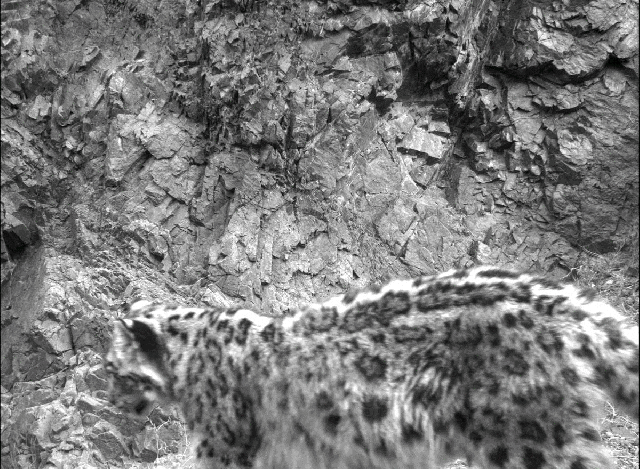In Mongolia’s Tost-Toson Bumba Mountains, spring is less of a transitional period than an extension of winter. But with the first days of May comes the earliest signs of an approaching summer – newborn snow leopard cubs. (Surely a welcome sight after the long, cold winter!) When Snow Leopard Trust began our long-term ecological study more than a decade ago, one of our priorities was to learn more about the reproductive cycles and early life stages of wild snow leopards. We have since diligently worked to fill these gaps, and one cat in particular – who you have met many times before – has played a crucial role in this mission.
Dagina is one of the most well-studied individual snow leopards in the wild. Over the course of 13 years, we have gained many insights from studying her in every stage of her life, from a trailing cub to a sub-adult poised to inherit her own territory and to a mother five times over. She has made an appearance on our research cameras every year since her birth in 2009 and been tracked twice with a GPS collar – making her one of only a handful of cats to have been collared more than once.
As a token of our appreciation for Dagina’s contributions to our research, we wanted to share an in-depth look into the life of this extraordinary snow leopard who we have come to know so well.















Dagina is an extraordinary cat indeed and has given us so much insight into the early stages of snow leopard development. With five separate litters over thirteen years, Dagina’s legacy lives on in both our research and through the many cats she has raised in this crucial habitat at the southern edges of Mongolia.
To support our conservation and share a piece of Dagina’s story with someone you care about, consider purchasing a symbolic snow leopard adoption. Both our Cub and Family Adoptions feature photos of Dagina and her cubs, along with a certificate, plush and more!


An amazing study in pictures. I can imagine one snow leopard raising one litter, and then being on her own with visits from the grown up cats, (female), but many litters over the years. Wow!
Happy Mother’s Day, Dagina! Here’s to you, your progeny, & the remarkable team at SLT!
Quite inspiring both for her and her many litters as well as for the Snow Leopard Trust surveyors persevering and being able to follow her for so long. Proud to help support research like this.
So informative!! I’m so happy to see this mother’s thriving with her kids!! :>) Wish I could support you financially, but I’m in deep financial trouble…could use some financial help myself. :>(
Fantástic work! Thank you very much! You are great people! Thank you!
Great work, tracking Dagina for so many years have definitely contributed to the study of biology of Snow leopards ?
Thank you for this wonderful documentary and the work you do. Happy to see my donations at work and only wish I could afford to send more.